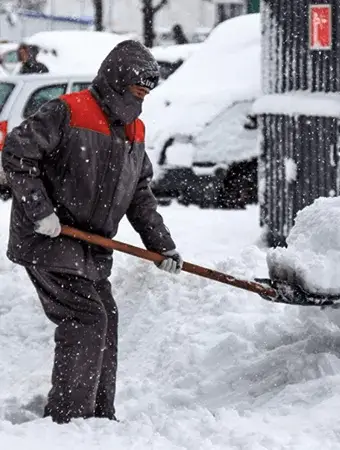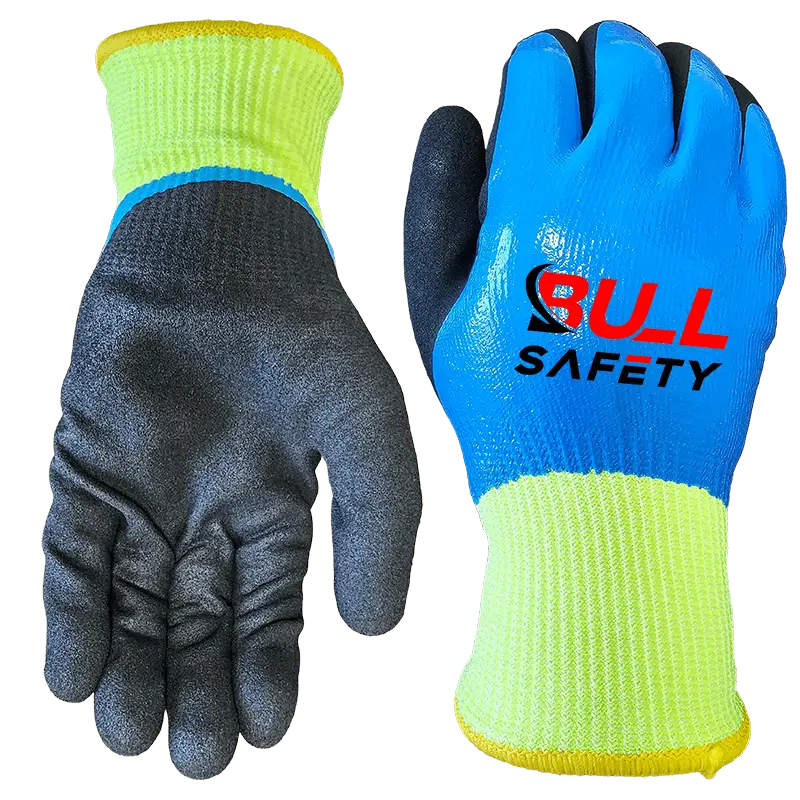
Thermal work gloves are essential for anyone working in cold environments1. Whether handling frozen goods, working construction in winter, or maintaining outdoor equipment, keeping hands warm, dry, and functional is critical.
✅ Thermal work gloves protect hands from extreme cold by using insulation materials like Thinsulate, fleece, or wool. Designed for industries such as construction, cold storage, and agriculture, these gloves provide warmth while maintaining grip and dexterity.
After working with PPE buyers for years, I’ve seen how the right gloves make a huge difference in performance and safety2. Workers exposed to freezing conditions3 lose dexterity quickly without proper insulation, which can lead to accidents and reduced productivity.
But do thermal gloves actually work? And which ones are best for your industry? Let’s break it down.
Do Thermal Work Gloves Really Work?
One of the most common questions I hear is: Are thermal gloves actually effective, or do they just feel warm at first?
Yes, thermal work gloves4 effectively insulate hands using materials like Thinsulate, fleece, or wool. Their performance depends on insulation type, outer waterproofing, and fit. High-quality gloves with windproof or waterproof layers provide better warmth and durability in extreme cold.

Insulation Materials for Thermal Gloves
Thermal work gloves are designed to trap body heat and block cold air. But not all insulation materials5 work the same way.
| Insulation Material | Pros | Cons | Best For |
|---|---|---|---|
| Thinsulate | Lightweight, excellent warmth, breathable | May not perform well in extremely wet conditions | Construction, logistics, outdoor work |
| Fleece | Soft, breathable, comfortable | Less effective in extreme cold | Moderate cold environments, indoor work |
| Wool | Retains heat even when wet, natural insulator | May be bulky and heavy | Agriculture, cold storage, outdoor work |
While insulation matters, the outer material is just as important. In wet conditions, gloves with waterproof membranes6 like Gore-Tex prevent moisture from reducing insulation effectiveness.
🔹 Key Consideration: Fit is crucial. If gloves are too loose, they allow cold air in. If they are too tight, circulation is restricted, reducing warmth.
Who Uses Thermal Work Gloves?
Over the years, I’ve seen thermal gloves used in nearly every cold-weather industry7.
Thermal work gloves are used in industries like construction, cold storage, and agriculture. Workers handling frozen goods, operating machinery in winter, or performing outdoor maintenance rely on insulated gloves for warmth, dexterity, and grip8.

Industries That Rely on Thermal Gloves
1️⃣ Construction & Outdoor Work – Workers handling metal tools in freezing temperatures need insulation + grip.
2️⃣ Cold Storage & Warehousing – Employees dealing with frozen goods require gloves with high insulation + dexterity.
3️⃣ Agriculture & Farming – Farm workers need warmth + durability for handling livestock and winter tasks.
4️⃣ Shipping & Logistics – Outdoor workers moving cargo in cold and wet conditions need waterproof thermal gloves9.
5️⃣ Outdoor Sports & Extreme Conditions – Hikers, climbers, and military personnel rely on thermal gloves for extreme weather protection.
I recently helped a cold storage facility manager choose gloves for his team. After switching to Thinsulate-lined gloves with nitrile grip coatings, worker complaints about cold hands and slipping dropped significantly. The right gloves improve both safety and efficiency.
How to Choose Thermal Work Gloves?
Whenever I help customers choose thermal work gloves, I ask them about their specific work conditions10. Some need gloves for sub-zero temperatures11, while others need waterproof protection or extra grip for tool handling.
You need to consider insulation type (Thinsulate, fleece, or wool), outer protection (waterproof coatings like nitrile or latex), and fit for dexterity. Industry-specific needs, such as cut resistance or reinforced grip, should also be evaluated.

Key Factors to Consider
1️⃣ Insulation Type – Thinsulate provides warmth without bulk, wool retains heat when wet, and fleece is breathable for moderate conditions.
2️⃣ Outer Layer Material – Durable materials like nylon, polyester, or leather protect against wind and abrasion.
3️⃣ Water Resistance & Waterproofing – Look for Gore-Tex membranes or latex/nitrile coatings in wet environments.
4️⃣ Grip & Dexterity – Reinforced palms or rubberized coatings help when handling tools or machinery.
5️⃣ Fit & Comfort – A snug but flexible fit prevents cold air from entering while maintaining hand mobility.
By focusing on these factors, I help clients select thermal gloves that keep workers warm, dry, and productive in harsh conditions.
FAQs
1. Are Thermal Work Gloves Waterproof?
Not all thermal gloves are waterproof. If you work in wet or snowy conditions, choose gloves with a waterproof membrane like Gore-Tex or latex/nitrile coatings.
2. Do Thermal Gloves Reduce Dexterity?
It depends on the insulation type. Thinsulate gloves provide warmth without bulk, while wool gloves can be thicker and less flexible.
3. How Do I Know If My Gloves Are Certified for Cold Protection?
Look for gloves tested under EN511 (cold protection) or ANSI standards for cut and abrasion resistance.
Conclusion
✅ Thermal work gloves protect hands from extreme cold using insulation materials like Thinsulate, fleece, or wool.
✅ Industries such as construction, cold storage, and agriculture rely on these gloves for warmth and dexterity.
✅ Choosing the right gloves depends on insulation type, waterproofing, fit, and industry needs.
🔗 Shop Certified Thermal Work Gloves
-
Explore this link to find the top-rated thermal gloves that ensure warmth and safety in cold working conditions. ↩
-
Discover insights on how choosing the right gloves can enhance worker safety and efficiency in cold conditions. ↩
-
Learn about the risks associated with freezing conditions and how proper gear can mitigate these dangers. ↩
-
Explore the benefits of thermal work gloves to understand how they keep your hands warm and protected in cold conditions. ↩
-
Learn about various insulation materials to choose the best gloves for your needs, ensuring warmth and comfort in cold weather. ↩
-
Discover how waterproof membranes enhance glove performance, keeping your hands dry and warm in wet conditions. ↩
-
Explore how various industries benefit from thermal gloves to enhance worker safety and comfort in cold conditions. ↩
-
Learn about the critical role of insulated gloves in providing warmth and dexterity for workers in harsh conditions. ↩
-
Discover the advantages of waterproof thermal gloves in protecting outdoor workers from cold and wet conditions. ↩
-
Understanding specific work conditions is crucial for selecting the right thermal gloves that ensure safety and comfort in various environments. ↩
-
Exploring how gloves function in extreme cold can help you make an informed choice for your safety and comfort during winter work. ↩



